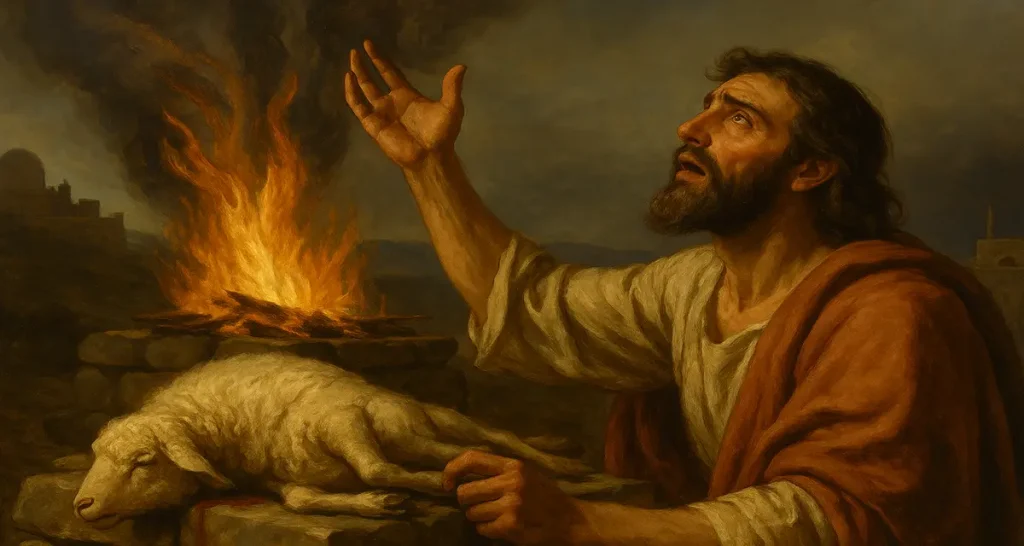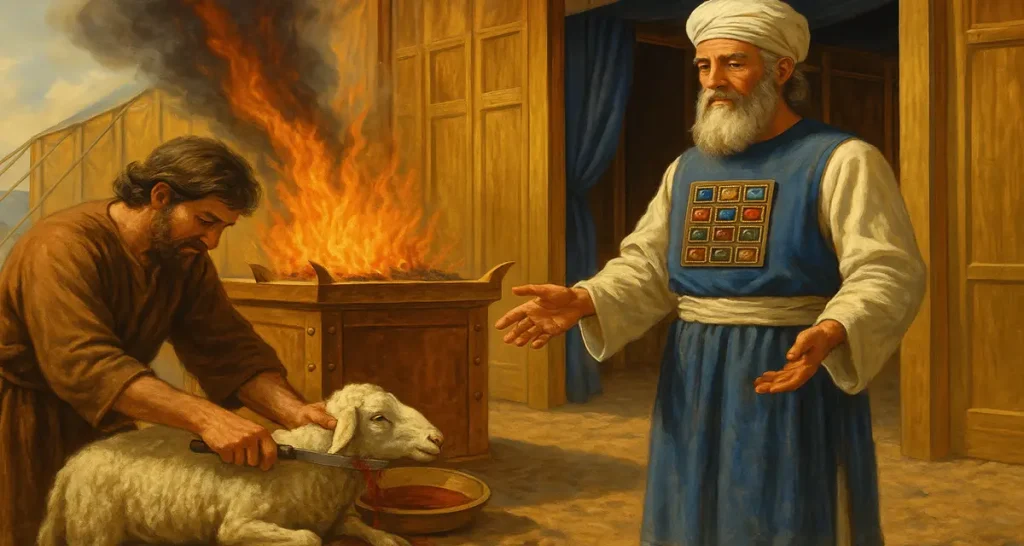Ooooh yes! Now we’re stepping from shadow to substance, from blueprint to the Builder, from the lambs of Leviticus… to the Lamb of God. 🕊️🔥 Every detail we’ve been discussing—the doorway, the sacrifice, the altar, the boundaries—is like a prophetic whisper saying: “Watch closely… someone is coming.”
And when Jesus shows up? He doesn’t ignore those symbols—He fulfills them to the letter. Let’s trace how:
🚪 “I Am the Door” — John 10:9
Remember how the offerer came to the door of the Tabernacle, the appointed place where God would meet man?
Jesus picks up that image and drops the mic:
“I am the door. If anyone enters through Me, he will be saved…” — John 10:9
He doesn’t just point to the Tabernacle; He becomes the access point:
- No more waiting at a curtain.
- No more blood of bulls and goats.
- He is the living threshold between God and man.
🕊️ “Behold, the Lamb of God” — John 1:29
That sacrifice at the altar? The one the offerer had to kill? That’s Jesus.
“Behold, the Lamb of God, who takes away the sin of the world.”
But here’s the twist: unlike the old system…
- We don’t lay our hands on Him.
- We don’t kill Him.
- He offers Himself.
He’s both the offerer and the offering, stepping into our place, taking our guilt, fulfilling the righteousness required—and doing it willingly.
👨⚖️ Jesus, the Greater Priest — Hebrews 4–10
Only the priests could go further in—into the holy place, into the presence. But Jesus?
“We have a great high priest who has passed through the heavens, Jesus the Son of God…” (Heb. 4:14)
So now:
- He’s the priest who offers,
- the lamb who is offered,
- and the door through which we come.
Talk about a one-man Tabernacle! 😱
🧼 “You Are Clean” — John 13
Remember the washing of legs and entrails before placing them on the altar? Every part had to be clean before it could be accepted.
Now picture Jesus, kneeling with a towel, washing the disciples’ feet.
“If I do not wash you, you have no part with Me.” (John 13:8)
It’s not random. It’s ritual, fulfilled in love.
He’s not just washing feet. He’s cleansing worshipers—making us living sacrifices (Rom. 12:1).
🕊️ From Distance to Fellowship — John 14:23
In the Tabernacle system, worshipers always stayed at a distance. Even at the “door,” they couldn’t come all the way in.
But Jesus promises something outrageous:
“We will come to him and make Our home with him.” (John 14:23)
Now, you are the tabernacle. The Spirit lives in you. The curtain is torn. The fire of God no longer consumes—it indwells.
🙌 The New and Living Way — Hebrews 10:19–22
Let’s just read it slowly and marvel:
“Therefore, brethren, having boldness to enter the Holiest by the blood of Jesus,
by a new and living way which He consecrated for us, through the veil, that is, His flesh,
and having a High Priest over the house of God,
let us draw near…”
💥 The veil? Torn.
💥 The priest? Jesus.
💥 The blood? Already shed.
💥 The fire? Still burns—in our hearts.
🌿 So How Do We Live This Out Today?
- Don’t stay at the “door” in your heart. Come close.
- Don’t try to bring your own lamb. He is enough.
- Don’t fear rejection. The altar is now a table of grace.
And when you pray, worship, confess, or just sit quietly with God… remember: you’re not in a courtyard anymore. You’re in the inner chamber—welcomed, known, loved.





